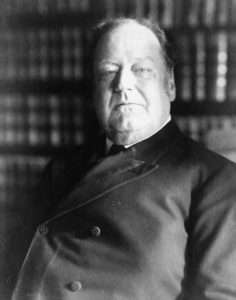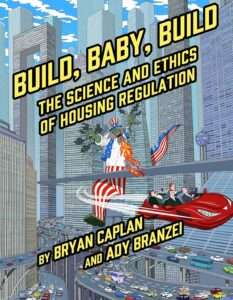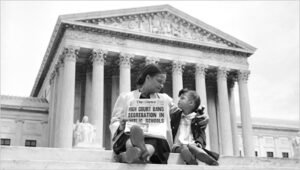
An Indiana court recently touched off a firestorm of media attention and online debate by ruling that burritos and tacos are sandwiches. The decision exemplifies a longstanding issue in legal interpretation: how to figure out the "ordinary meaning" of words in a statute or regulation. It also highlights the absurdity of zoning rules restricting the development and use of property.
The case arose because developer Martin Quintana wanted to use a property he owned in Fort Wayne, Indiana for commercial purposes. In order to be able to do that, he had to get the Fort Wayne Plan Commission (a local government agency) to "upzone" the area from allowing single-family residential housing only, to allowing some types of commercial uses. The Commission was only wlling to do that in exchange for Quintana signing a "Written Commitment" (required at the behest of a local NIMBY group) under which only certain types of restaurants would be allowed in the area. The restrictions imposed by the Commitment became new zoning rules for these tracts. Specifically, the Commitment bars "restaurants, including fast food-style restaurants," except for the following:
A sandwich bar-style restaurant whose primary business is to sell "made-to-order" or "subway-style" sandwiches (which by way of example includes, but is not limited to, "Subway" or "Jimmy John's", but expressly excludes traditional fast food restaurants such as "McDonalds", "Arbys" and "Wendys"), provided that any such restaurant shall not have outdoor seating or drivethrough service….
One of the businesses Quintana recruited as a tenant for the new development is a Famous Taco establishment—a Mexican restaurant that (as the name implies) serves tacos and burritos. The Plan Commission contended the Famous Taco should be barred because these food options are not "sandwiches." Indiana Superior Court Judge Craig Bobay rejected that argument, concluding that burritos and tacos are, in fact sandwiches:
The proposed Famous Taco restaurant falls within the scope of the general use approved in the original Written Commitment. The proposed Famous Taco restaurant would serve made-to-order tacos, burritos, and other Mexican-style food, and would not have outdoor seating, drive-through service, or serve alcohol. The Court agrees with Quintana that tacos and burritos are Mexican-style sandwiches, and the original Written Commitment does not restrict potential restaurants to only American cuisine-style sandwiches. The original Written Commitment would also permit a restaurant that serves made-to-order Greek gyros, Indian naan wraps, or Vietnamese banh mi if these restaurants complied with the other enumerated conditions.
In Indiana, as in most jurisdictions, courts are generally required to interpret laws (or, in this case, an agreement that has the force of law, by virtue of being embodied in a zoning restriction) in accordance with their "ordinary meaning." The Supreme Court of Indiana recently reiterated that rule in its February decision in Spells v. State.
Do tacos and burritos fall within the ordinary meaning of "sandwich"? It's hard to say. I think most Americans would not usually refer to these items as sandwiches. On the other hand, it's not hard to see why a taco or a burrito would fall under what most ordinary people would understand to be the general concept of a sandwich: meat and/or vegetables encased in bread or some other similar wrap. Thus, it may be that Judge Bobay was right to conclude that tacos and burritos are "Mexican-style sandwiches," even if few people would actually refer to them in that way. It all depends on whether ordinary meaning depends on usage or on people's intuitive theoretical understanding of the concept in question.
This ruling diverges from a controversial 2006 Massachusetts state court decision, which held that tacos, burritos, and quesadillas do not fall within the ordinary meaning of "sandwich," because that term normally refers to a food item encased in two pieces of bread, while these Mexican foods usually only feature one. Judge Bobay does not cite the Massachusetts precedent, which—in fairness—isn't binding in Indiana. He also doesn't consider the issue of whether a sandwich must have two pieces of bread, as opposed to just one.
To my mind, food encased in a single continuous piece of bread (or tortilla roll) still counts as a "sandwich." The top and bottom of a hamburger bun or hot dog roll are sometimes connected to each other. But that doesn't mean hamburgers and hot dogs can't qualify as sandwiches. My wife (who is both a lawyer and much more knowledgeable about food than I am) points out there are "open-face sandwiches" that use only one piece of bread.
Perhaps these kinds of issues reveal the limits of "ordinary meaning" interpretive rules. Ordinary people (at least those who aren't lawyers) usually just don't think about these kinds of conundrums. Thus, when an issue like whether burritos qualify as sandwiches comes up, there may not be any unequivocal "ordinary meaning" answer to the question at hand.
Whichever way you come down on the definition of "sandwich," this case also highlights the absurdity of zoning restrictions on development. Barring some kind of significant danger to public health or safety (of which there is no evidence here), Quintana should not have had to get special permission to use his property for commercial purposes in the first place. It makes even less sense to allow restaurants that serve "'made-to-order' or 'subway-style' sandwiches," but not those that serve other kinds of food. This distinction appears to be based on little more than the esthetic preferences of the Covington Creek Association, the NIMBY group that pressured the Plan Commission into imposing this restriction on the development.
Such NIMBYism causes real harm to both property owners (who are deprived of the right to use their own land as they see fit) and consumers who wish to patronize their services. I don't especially like tacos and burritos, myself. But many people do, which is why there is a substantial demand for restaurants like Famous Taco.
In a forthcoming Texas Law Review article, Josh Braver and I argue that exclusionary zoning rules restricting housing construction violate the Takings Clause of the Fifth Amendment. Restrictions on commercial development are a more complicated case. But under the originalist theories discussed in Part II of the Article, such restrictions also violate the right to use property protected by the Takings Clause, unless they protect against a serious threat to public health or safety, and thereby fall within the "police power" exception (see Section II.C). Things may be different under the living constitution approaches covered in Part III of the article.







Show Comments (33)